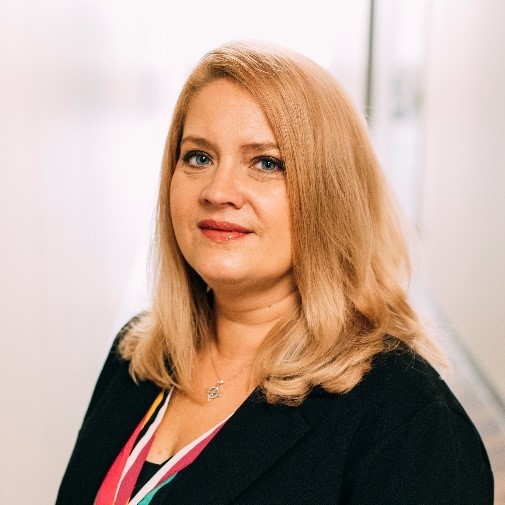Final expense can be among the most rewarding life insurance products to sell, but it isn’t the easiest to discuss. What are some unique ideas for selling final expense insurance?
In general, final expense insurance itself can be easy to learn, with low face amounts, low premiums, and simplified underwriting. The target market and need for this product are both extensive, however, it can be hard to segue into and give a final expense sales presentation.
There’s an art to selling final expense insurance. Let’s review five out-of-the-box methods you can utilize to enhance your success!
Consider Leads Outside of Your Target Market
Your target market for final expense is low-to-middle-class seniors, ages 50 and above. But, don’t limit yourself to this age demographic! There can be sales opportunities for final expense with people under the age of 50 and as gift purchases (e.g., a grandparent who’d like to purchase a policy for their grandchildren).
In your low-to-middle-class target market, the need is great. According to the National Funeral Directors Association, the national median cost of a funeral with a viewing and burial in 2023 was $8,300 while the median cost of a funeral with cremation was $6,280. By calculating the cost of these services using a funeral planning worksheet and offering policies and pricing options that are affordable to your clients, you can minimize or eliminate the biggest funeral planning challenge for them.
Oh, by the way… Why only consider final expense for your target market? Think about final expense insurance as simplified whole life that you can offer to any of your clients!
Are you working with upper-middle-class seniors? Do their grandchildren have juvenile policies? If not, why not? Do you have middle-aged, middle-class clients that could now benefit from permanent insurance along with their term insurance? They’re likely earning more and thinking more about their future. You can find carriers who will offer up to $100,000 in a simplified format. Why not use it to your advantage?
Build Rapport with Final Expense Prospects
The good news is that, if you’re an agent who’s already working with a Medicare book of business, you’ll likely already have started the process of building rapport with clients.
Some agents probably avoid having “the death conversation” with their clients. One of the most effective ways of broaching the topic with clients or prospects is to point out the elephant in the room and address it via a more personal approach. Building rapport can be easy when you share a personal story that your audience can relate to, such as a family member or friend who passed away and how you and your family dealt with all the financial and extremely emotional decisions that had to be made very quickly. Ask the question, “Do you think that if all of these decisions had been made ahead of time and paid for ahead of time, the family would be relieved and grateful they knew, with absolute certainty, that they were following their loved ones wishes?”
Oh, by the way… As a final expense agent, you’ll want to always be branding yourself as the go-to person for funeral planning. Your final expense presentation should walk the client through all the related details in a simple and easy-to-understand fashion.
Aside from the obvious purchase of leads, there are many ways to develop final expense lead sources. Here are two:
- Offer life insurance seminars or Q&A sessions at local churches and community events, positioning them as free public education hosted by a knowledgeable professional in the industry. In this way, you can reach many people at once and in person. You can also offer free insurance reviews by appointment and send follow-up letters in which you offer to answer any lingering questions.
- Build your profile in the community by contributing to and volunteering at local community events and causes. You can sponsor a local youth sports team or offer educational sessions to local small businesses who would like to offer voluntary benefits to their employees.
Aim to Make Customers Your Clients for Life
Rather than only having the funeral conversation, why don’t you use this opportunity to make your customers your clients for life? How do you do that?
One of the most effective tools to use with current clients is a client profile worksheet, called a fact finder This is a short document you can fill out, while meeting with clients, that should help you uncover opportunities for additional sales. Information collected on the fact finder generally helps agents become familiar with the client and their family, as well as their insurance wants and needs.
Oh, by the way… Did you know Ritter has a short, but effective, one-page fact finder that helps you gather all the relevant information you need to uncover sales opportunities?
As you complete a fact finder, like the one-page Ritter Fact Finder, you’ll collect information about your client’s current health conditions and any medications they take. This process will help you determine which final expense policy may work the best for that particular client. You’ll also gather financial information to assist both you and your client in determining how much premium they can realistically afford, reviewing their current insurance policies and insurance needs, and determining if there are other members of the household who could also need or want to update their insurance coverage.
While the average premium on a final expense policy is usually less than $50 per month, your target market of low-to-middle-income clients may need assistance in determining if they can fit these monthly premiums in their budget. (They may even believe life insurance costs way more than it actually does!) Luckily, completing a client profile fact finder can also help you determine if there are funds in other areas that can be repositioned to assist with life insurance coverage.
Consider the following alternative ideas for sales:
- For healthy clients on a budget, consider simplified issue traditional life insurance, instead of a final expense policy. A traditional whole life product may have more underwriting questions and disqualifying conditions, but it may also offer an even lower premium for healthy clients.
- While reviewing the insurance needs of other family members, consider final expense products for younger adults who have chronic conditions and may find it difficult to qualify for traditional life insurance products.
- Discuss the living benefits that many final expense policies now offer. Several policies offer critical and chronic illness riders, terminal illness riders, and even term riders for spouses and children. You may be able to meet more than one insurance need with the same product.
- Clients could be interested in a traditional whole life product for their children or grandchildren. Traditional whole life products can build cash value and provide guaranteed insurability in the future.
Understand Final Expense Underwriting
All final expense policies offer simplified underwriting. Simplified underwriting refers to underwriting that requires no medical or physical exams. With this type of underwriting, policies can usually be issued within a matter of days, or even instantly with telephone underwriting or an e-application process.
Because final expense underwriting is so simplified, an agent can almost always determine if a carrier will accept a client by simply reviewing the medical questions on the carrier’s application. In addition, many final expense carriers’ underwriting processes are similar. There are several uninsurable conditions that often disqualify clients for a traditional final expense policy, such as a heart attack or stroke within the last 12 months, cancer within the last two years, AIDS/HIV, Lou Gehrig’s Disease (ALS), congestive heart failure, oxygen use, residing in a nursing home, or not being able to perform all of the activities of daily living (ADLs). You should always have a guaranteed issue product available for clients with these types of conditions.
Oh, by the way… Did you know that there are guaranteed issue final expense carriers that offer a chronic illness rider on the policy? For clients who have significant medical issues, the benefits of a rider such as this could seal the deal.
If you have clients who do not have any of these major health conditions, but who have other conditions (e.g., diabetes, Chronic Obstructive Pulmonary Disease without oxygen use, alcohol or drug use, or taking narcotic pain medications regularly) that may make an insurance carrier pause, they’d probably make good candidates for graded or modified final expense coverage. For graded and modified final expense policies, carriers reduce the death benefit for the first several years of the policy.
Underwriting can vary by carrier, and determining which carrier will underwrite your client’s medical condition more favorably will be the next step. Carriers often have underwriting “niches” that may help you place a client into a level benefit policy over a graded or modified policy. Two examples include:
- Level death benefits for clients who have had a heart attack more than 12 months, but less than two years, ago. Most policies will not offer level benefits for this condition, unless it has been at least two years or more since the heart attack.
- Level death benefits for clients with diabetes who are using insulin and have not experienced any complications, such as diabetic neuropathy.
Agents who are familiar with these types of product niches will be able to very quickly determine the best carrier for the client in question. With healthier clients, or clients who are only taking basic maintenance medications, a level benefit final expense policy with standard or preferred rates is possible. Level benefit policies offer the most cost-effective premiums and have more riders available than graded or modified policies. And, the full death benefit of these policies will be paid from the first day the policy is in effect.
Oh, by the way… There is even a carrier who will offer non-smoking rates for smokers during the first several years of the policy to encourage the client to quit!
Since smoker rates can be significantly higher than non-smoker rates, this can be a great benefit to clients who smoke to encourage them to quit for good. If the client does not quit smoking during that time, the policy’s face amount will be reduced.
Perfect Your Final Expense Sales Pitch
Once you have reviewed the client’s health and financial condition, completed the application, and discovered the type of coverage the client qualifies for, it’s important to offer payment options that meet the client’s budget.
One of the most effective ways of closing a final expense sale can be to offer the client three coverage and monthly payment options. For example, offering death benefit amounts of $7K, $10K and $12K, with the corresponding monthly payments, may help the client determine how much they’re willing to spend. It also clearly demonstrates to the client how a small premium difference could purchase several thousand dollars more in coverage.
Oh, by the way… Don’t forget to take advantage of the additional marketing tools that are available to help you in final expense presentations!
There are life insurance sales tools and programs out there that you can also use to offer funeral planning services, including customized photo presentation, assistance with locating local funeral homes, travel arrangements, and floral services. Usually, you can even offer these services free to all prospects, whether they purchase an insurance policy from you or not!
If you’re selling final expense insurance, there are multiple ways you can think outside the box for new leads and new sales. There’s nothing wrong with using a final expense appointment to simply sell a final expense insurance policy. But, with your clients’ best interests in mind, delving deeper and exploring coverage gaps may lead to additional sales opportunities and help set you up for long-standing, mutually beneficial business relationships.






Not affiliated with or endorsed by Medicare or any government agency.
Share Post